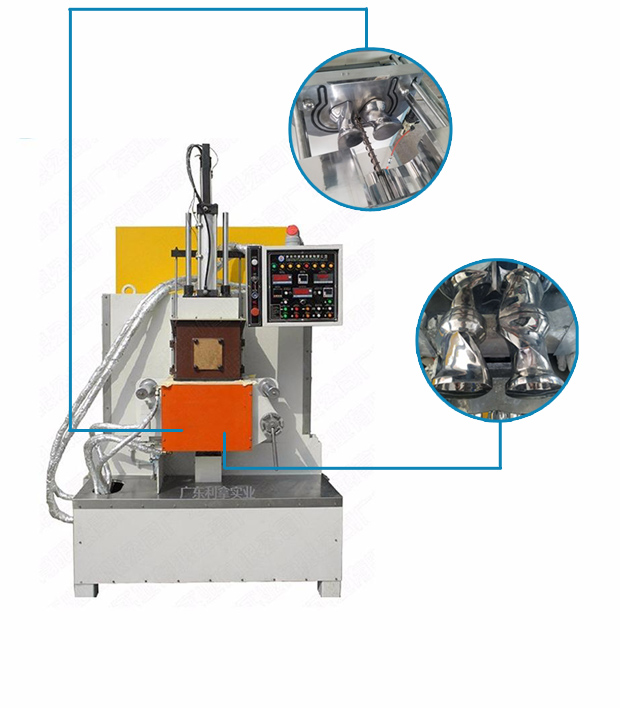Analysis on the development trend of numerical control technology and equipment
1 Development trend of numerical control technology
The application of numerical control technology not only brought revolutionary changes to the traditional manufacturing industry, but also made the manufacturing industry a symbol of industrialization. With the continuous development of numerical control technology and the expansion of application fields, he has some important industries (IT, automobile) for the national economy and the people's livelihood. The development of light industry, medical care, etc. plays an increasingly important role, because the digitization of the equipment required in these industries is a major trend in modern development. Judging from the current trends in the development of CNC technology and its equipment in the world, its main research hotspots are as follows [1~4].
1.1 New trends in high-speed, high-precision machining technology and equipment
Efficiency and quality are the mainstays of advanced manufacturing technology. High-speed, high-precision machining technology can greatly improve efficiency, improve product quality and grade, shorten production cycle and improve market competitiveness. To this end, the Japan Advanced Technology Research Association listed it as one of the five modern manufacturing technologies, and the International Society of Production Engineering (CIRP) identified it as one of the central research directions of the 21st century.
In the car industry, the annual production cycle of 300,000 units is 40 seconds per vehicle, and multi-variety processing is one of the key issues that must be solved in car equipment; in the aerospace and aerospace industries, the parts processed are mostly thin-walled. And thin ribs, the rigidity is very poor, the material is aluminum or aluminum alloy, and these ribs and walls can be processed only when the cutting speed and cutting force are small. Recently, a large-scale aluminum alloy blank "hollowing" method has been used to manufacture large parts such as wings and fuselages to replace multiple parts by assembling numerous rivets, screws and other joints, so that the strength, rigidity and reliability of the components are obtained. improve. These all require high speed, high precision and high flexibility for processing equipment.
From the situation of EMO2001, the feed rate of high-speed machining center can reach 80m/min or even higher, and the idle speed can reach about 100m/min. At present, many automobile factories in the world, including Shanghai General Motors Co., Ltd. of our country, have already replaced the combination machine tools with a production line composed of high-speed machining centers. The CINCINNATI HyperMach machine has a feed rate of up to 60m/min, a fast speed of 100m/min, an acceleration of 2g and a spindle speed of 60 000r/min. It takes only 30 minutes to process a thin-walled aircraft part, and the same part takes 3 hours for general high-speed milling machine and 8 hours for ordinary milling machine. The spindle speed and acceleration of German DMG double-spindle lathe are 12*!000r/mm respectively. And 1g.
In terms of machining accuracy, in the past 10 years, the machining accuracy of ordinary CNC machine tools has been increased from 10μm to 5μm, and precision machining centers have been improved from 3 to 5μm to 1 to 1.5μm, and ultra-precision machining accuracy has begun to enter the nanometer class. (0.01 μm).
LINA Disassemble Dispersion Kneader
LINA disassemble dispersion kneader provides excellent cleaning performance especially for sticky materials. Without affecting dispersion kneader's mixing effect, the rotor can be separated easily from the mixing chamber. This type of dispersion Internal Mixer is suitable for a variety of materials and able to provide a better performance dust seal for preventing material leakage.
Special design for CIM & MIM
1. Higher cleanness: Clean up the material without dead corners; the mixing chamber and rotors of the dispersion kneader can be separated completely; All surface that directly contact with the material is mirror polished, which ensure all the materials easy to clean without stickiness.
2. Wearable inner cavity: Imported special new alloy steel and vacuum heat treatment are adopted. Strong wear resistance, resistance to horizontal erosion, corrosion resistance and high glossy finish effects are achieved.
3. Adjustable rotor speed ratio: The speed ratio of rotors is adjustable, which target at some special material function requirements and achieve best dispersion effect and efficiency. The kneader with adjustable rotor speed ratio is designed especially for those materials that are sensitive of temperature/high require of different temperature/fast change rate of temperature/fast and span molecular chain diversification.
4. Temperature control system: A lot of trials report that stage temperature control has the essential effect of ceramics` color difference.
5. PLC intelligent control system: 1. Real-time data record and export of kneading time, temperature (mixing chamber and front/rear rotors), ram pressure, current, torque and recipe code. 2. The control system can be set up to 20 mixing steps, save 20 recipe spaces. 3. The control system is capable of remote importing of the process recipe and data monitoring, and communicating with MES via Ethernet communication interface. 4. An Ethernet communication interface and 20% of the control points are reserved. Touch screen is provided.

Specifications of LINA Disassemble Dispersion kneader
Type
Size (L)
Dimension (mm)
Weight (kg)
LN disassemble dispersion kneader
0.5
1600*900*1900
800
1
1600*900*1900
800
2
1600*900*2000
900
3
1600*900*2100
900
5
1900*1000*2100
1200
10
2200*1350*2150
2500
Disassemble Dispersion Mixer,Disassemble Kneading Machines,Rubber Disassemble Dispersion Mixer,Ceremic Disassemble Mixer
LINA Machinery Industrial Co.,Ltd , http://www.linakneader.com